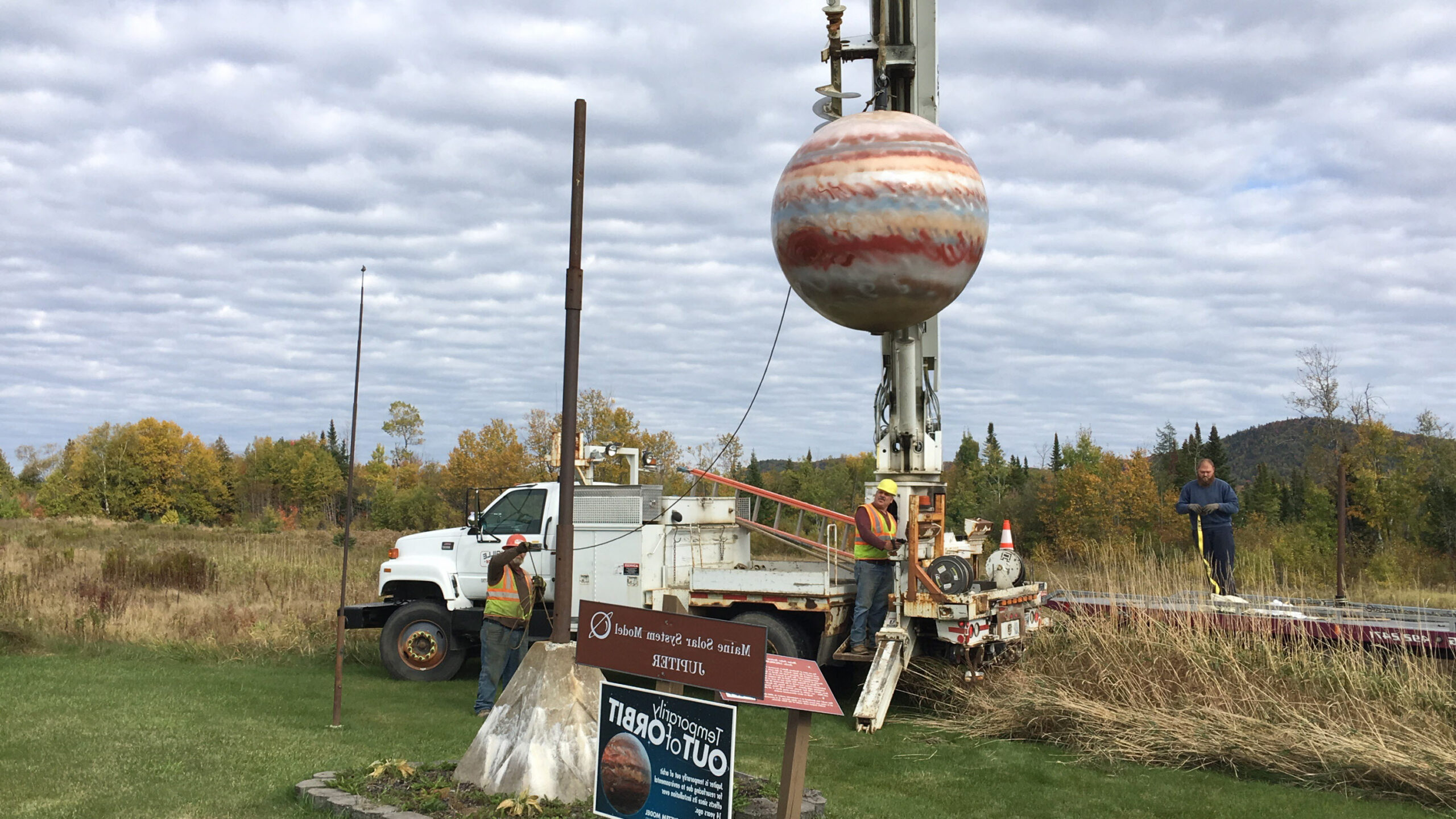
PRESQUE ISLE, Maine — The planet Neptune — usually located 31 astronomical units (miles) from the Sun as part of the Maine Solar System Model along Route 1 in northern Maine — is officially out of orbit.
Kevin McCartney, professor at the University of Maine at Presque Isle and coordinator of the model, said “space tugs” recently transported the planet to Northern Maine Community College (NMCC) for maintenance.
“I am waiting to hear the question from NASA about how we did that,” McCartney said.
Neptune is the second planet to receive maintenance in the last year, as Jupiter was completely recovered, repainted, and put back into orbit during the summer. Neptune is a smaller project as the diameter is only 21.3 inches, at the same scale as the distance between planets along Route 1. The Maine Solar System Model stretches from UMPI to Topsfield, Maine. It is the largest scale model of the solar system in the Americas and was built by the community of northern Maine, with participation from many local individuals and companies.
Neptune’s top portion, which showed its 26-degree tilt, was simply unbolted from the vertical post by Jeff Robertson of Beaulieu’s Garage in Caribou, which handled the Jupiter maintenance. Keith Wheeler assisted in getting Neptune down and taking the planet to Presque Isle.
The original work on Uranus and Neptune was done by the Southern Aroostook Vocational Education Center in Houlton, with assistance from Bob Aucoin of Bangor Street Auto Body. Those two planets were placed in orbit in 2001, after installation of the smaller “terrestrial” planets in 2000 and before Jupiter and Saturn were put up in 2002 and 2003.
The current maintenance will repair some damage to the fiberglass on the back side of the planet, and recondition it for another 20 or more years in orbit. The work will be completed by NMCC’s Auto Collision Repair students with the guidance and supervision of their instructor, Bob Collins.
“This project will provide a unique and fun opportunity for first-year students to learn the process of fiberglass repair,” Collins said. “Surface preparation and bonding methods are necessary skills for technicians in this field. The additional perk is that after Neptune finds its way back into the solar system, the students will have a reminder of their time at NMCC, each time they drive by.”
McCartney said Jupiter and Neptune were the two planets most obviously in need of service. He is currently working to get a bird’s-eye view of Uranus and Saturn to see how the northern hemispheres (tops) of these planets have held up to the weather.
The Maine Solar System Model was built over a period of four years, from 1999 to 2003, with dwarf planets added in 2008. Established by the University of Maine at Presque Isle, the Northern Maine Museum of Science, and the northern Maine community, it is the largest solar system model in the Western Hemisphere, with both the planet diameters and distances from the Sun set to a scale of one mile equal to an astronomical unit (AU, the distance from the Sun to Earth).
The model consists of a 50-foot diameter Sun at UMPI and extends 95 miles to the dwarf planet Eris, which is about one inch in diameter, in Topsfield.




